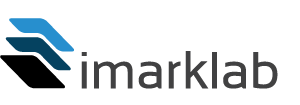User Research on a Budget
In May, we published 5 facts about usability testing (supported by numbers) to show you how relevant it is. In a perfect world, all companies would do user research regularly. In the real world, budget is often an issue. Believe it or not, user research can be cheap even if you work with user experience professionals. At imarklab, we often adapt our approach to tight research budgets, especially when we work with small and medium-sized businesses. Sceptical? Keep reading for a few tricks…
Recruit Participants Yourself
And I do not mean ask family members to comment your website. I mean: define your recruitment criteria (profile of your users), prepare a list of people to contact (clients or other), contact those people, make sure they are interested by your research and available to participate, confirm their presence the day before, etc.
Recruiting participants takes time and thoroughness. You need access to a list of potential participants and most importantly, time to take care of it. However, recruiting your own participants will reduce cost significantly. You will also get to choose how you want to compensate participants (cash, gift certificate, free service, etc.).
Create Your Own Usability Lab
When conducting usability tests, individual interviews or focus groups, we prioritize rooms equipped with one-way mirrors. It is the best option for our clients to assist to user research activities in real-time and for us to take detailed notes during user consultations.
On a budget? Create your own usability lab in your offices and eliminate the cost of research facilities. At imarklab, most of our equipment can be installed about anywhere. You would still like to assist to your user consultation in real-time? We use a software that allows us to see and hear what is going on in real-time in another room.
Recruit Less Participants
Cutting down on participants will save you time… and prevent you from biting your nails. Believe me, recruiting participants is harder than it looks. Having fewer participants also means quicker analysis and less time spent conducting interviews. If you work with research or user experience professionals, it means fewer billable hours.
Will you still get quality results? Of course. If you are not working with very distinct profiles of users (e.g., students and professors for universities) you should not be worried. With as little as 6 users, we identify close to 90% of usability problems. User research is qualitative so sample size should not be a concern as it is for surveys.
Ask for a Summary Report
A classic report includes findings, visual elements (e.g., screenshots), verbatims (quotes from participants), video extracts and recommendations with different severity levels. This format is ideal to get a detailed analysis and can easily be shared with all stakeholders involved in a project (e.g., developers, communication department, etc.).
A summary report can be enough when working alone or with a small team. A simple debrief might also do the trick if you assist to all user consultations. It is less detailed but requires minimal time from the research team. If your research questions are not too complex, you should consider a summary report or debrief to reduce cost.
Take it Easy with Technology
We often use technologies such as eye tracking and face reading to gain in precision and objectivity. Technologies like these add a lot of value to some of our projects. However, in some cases, they are not necessary and we choose not to use them.
Choose a classic methodology with just enough technology and you will reduce cost drastically. Think about it, you might not even need fancy technological tools in the first place. Begin by figuring out your needs based on your research questions!
***
Apply these tricks and user research will quickly become much more accessible. Are tight deadlines holding your back from doing user research? Are you having a hard time working with fixed dates or timelines? Agile usability testing might interest you.
Cover picture: MaxWorth







